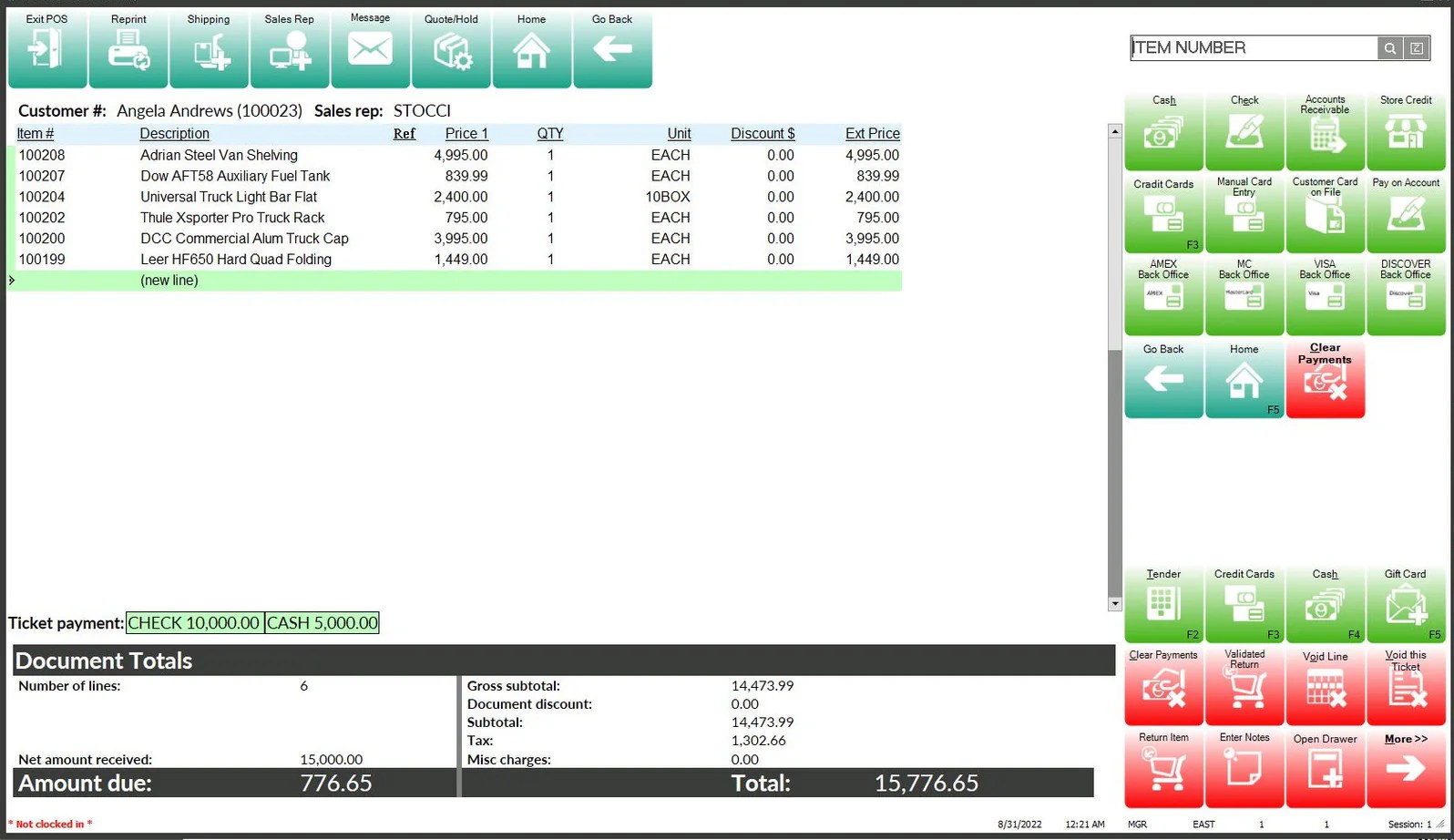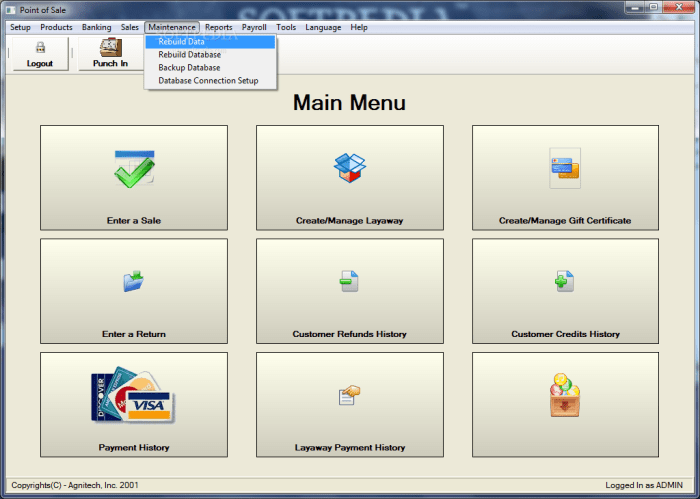Desktop point of sale software is revolutionizing how businesses manage transactions and inventory. From small retail shops to large enterprises, this powerful tool offers a centralized platform for efficient order processing, customer management, and reporting. Its robust features and user-friendly interface make it an invaluable asset for modern businesses.

Source: shopify.com
This software simplifies the entire sales process, allowing staff to quickly and accurately process orders, manage customer details, and generate reports on sales performance. The system’s versatility enables customization to meet specific business needs, from basic retail operations to complex inventory management.
Running a successful business often hinges on efficient operations, especially in the retail and hospitality sectors. A robust desktop point of sale (POS) system is crucial for streamlining transactions, managing inventory, and providing valuable insights into your business performance. This comprehensive guide dives deep into the world of desktop POS software, helping you understand its features, benefits, and how to choose the right solution for your specific needs.
Understanding Desktop POS Software: Core Functionality: Desktop Point Of Sale Software
Desktop POS systems, unlike cloud-based alternatives, reside entirely on your computer network. This on-premise setup provides greater control and security over your data, potentially being a better fit for businesses with specific security requirements or large volumes of sensitive transaction data. Key functionalities typically include:
- Transaction Processing: Enabling fast and accurate processing of various payment types (credit cards, debit cards, cash). Look for systems with robust processing integrations.
- Inventory Management: Tracking stock levels, managing reorder points, and assisting in inventory forecasting to prevent stockouts or overstocking. A crucial feature for optimizing your inventory.
- Customer Relationship Management (CRM): Storing customer information, purchase history, and preferences. This fosters better customer relationships and targeted marketing efforts.
- Reporting and Analytics: Generating reports on sales, inventory, and profitability. Crucial for understanding business performance and making data-driven decisions.
- Customer Loyalty Programs: Implementing programs to reward repeat customers and encourage future business. Essential for driving customer retention.
- Employee Management: Managing employee schedules, payroll, and access levels, helping maintain operational efficiency.
Key Considerations When Choosing Desktop POS Software
Choosing the right POS system is paramount. Consider these factors:
- Scalability: Ensure the system can adapt to your growing business needs, accommodating increased sales volume and new products.
- Integration Capabilities: Assess its compatibility with existing accounting software, inventory systems, and other business applications. Seamless integration minimizes data redundancy and streamlines workflows.
- User-Friendliness: A system that’s easy for staff to learn and use reduces training time and minimizes errors. Look for intuitive interfaces and comprehensive training materials.
- Security Features: Protecting your financial data is paramount. Choose a system with robust security measures to safeguard against fraud and unauthorized access.
- Customer Support: A reliable support system is crucial, especially during implementation and troubleshooting phases. Assess the quality and responsiveness of customer support services.
- Cost-Effectiveness: Consider the total cost of ownership, including software licensing fees, hardware requirements, implementation costs, and ongoing maintenance.
Comparing Desktop POS Systems, Desktop point of sale software
Many reputable companies offer desktop POS software. Researching and comparing options is essential. Factors to consider during comparison include the specific features mentioned above, price, and vendor reputation. Read online reviews and compare demos to find the best fit.
Advanced Features
Some advanced features to consider include:
- Table Management (for restaurants): Efficiently managing tables, reservations, and wait times.
- Kitchen Display Systems (KDS): Streamlining order communication between the kitchen and front of house.
- Loyalty Programs and Promotions: Driving customer retention and engagement through tailored promotions.
Frequently Asked Questions (FAQ)
- Q: What is the difference between cloud-based and desktop POS systems?
A: Cloud-based systems are hosted online, while desktop systems are installed locally. Desktop systems offer greater control but require more upfront investment and IT support. Cloud systems are typically more scalable but require a reliable internet connection.
- Q: How much does desktop POS software cost?
A: Pricing varies significantly based on features, functionalities, and vendor. Contact vendors directly for accurate pricing.
- Q: What are the benefits of using a POS system?
A: Enhanced accuracy in transactions, improved inventory management, real-time sales data, and improved customer service.
Conclusion
Choosing the right desktop POS software is a crucial investment for any business aiming to streamline operations and enhance profitability. Thorough research, careful consideration of your specific needs, and a focus on features like scalability, security, and user-friendliness will help you select a solution that drives your business forward.
Don’t hesitate to consult with POS software vendors and read reviews from other businesses. Choosing the right system can significantly impact your daily operations, and this guide is meant to empower you in making an informed decision.
Call to Action (CTA): Explore our detailed comparison of top desktop POS software solutions.
In conclusion, desktop point of sale software provides a comprehensive solution for businesses looking to optimize their sales operations. Its ability to streamline transactions, manage inventory, and generate insightful reports makes it an essential tool for success in today’s competitive market. Investing in this technology can significantly enhance efficiency and profitability for businesses of all sizes.

Source: softpedia.com
Expert Answers
What are the common hardware requirements for desktop POS software?
Typical requirements include a compatible computer, a printer (often receipt or label), a cash drawer, and potentially a barcode scanner or credit card reader. Specific needs may vary depending on the software’s features and the business’s setup.
How can I integrate my existing accounting software with my desktop POS system?
Many POS systems offer APIs or integrations with popular accounting software. This allows for seamless data transfer between systems, minimizing manual data entry and ensuring accurate financial records.
Does desktop POS software offer customer loyalty programs?
Many POS systems have built-in or add-on features for customer loyalty programs. These programs can help businesses retain customers, track their preferences, and offer targeted promotions.
What support options are available for desktop POS software?
Most vendors offer various support options, including online documentation, FAQs, email support, and potentially phone support. It’s important to check the vendor’s support policies before purchasing.